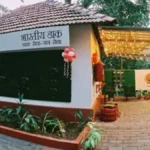Introduction
India is home to many culturally rich and historically significant places. Among these, a particular district has earned the nickname ‘Gulal City’ due to its unique association with colors and festivities. This article explores the significance of this title, the district it belongs to, and its cultural relevance.
The District Known as ‘Gulal City’
The district recognized as ‘Gulal City’ is Krishna District in Andhra Pradesh. The region is famous for its vibrant traditions, especially in the context of celebrations and cultural festivals that prominently feature gulal (colored powders). Krishna District has a deep-rooted cultural heritage and plays a significant role in various social and religious festivities in India.
Why is Krishna District Called ‘Gulal City’?
The title ‘Gulal City’ is attributed to Krishna District because of its deep connection to the festival of colors, Holi, and its association with color-based celebrations throughout the year. The area is known for large-scale production and distribution of gulal, which is widely used during Holi and other cultural events. Additionally, the district hosts numerous fairs and festivals where gulal is extensively used to enhance the festive spirit.
Economic and Cultural Significance
Krishna District is not just a cultural hotspot but also contributes significantly to the economy through its gulal manufacturing industry. The production of organic and chemical-free gulal has gained momentum in recent years, promoting eco-friendly celebrations. The district’s traditional artisans and traders have played a crucial role in sustaining this industry, making it an integral part of local livelihood.

Why This News is Important?
Cultural Recognition
The recognition of Krishna District as ‘Gulal City’ highlights India’s rich cultural diversity. It emphasizes how deeply festivals and colors are embedded in Indian traditions and local economies.
Boost to Local Economy
With this recognition, the demand for gulal from Krishna District is expected to rise, providing a boost to local artisans and traders. This will also create more employment opportunities in the region.
Promotion of Eco-friendly Practices
The increasing awareness about the environmental impact of synthetic colors has led to a shift toward organic gulal. The district’s role in producing eco-friendly color powders further enhances its significance on a national level.
Historical Context
Krishna District has a long history of cultural vibrancy, being a prominent part of Andhra Pradesh’s historical landscape. It is home to significant ancient temples and has been an important trade and commerce hub since medieval times. The region’s affinity for colors can be traced back to age-old traditions where colors played a vital role in rituals, ceremonies, and community gatherings.
Key Takeaways from ‘Gulal City’ News
| S. No. | Key Takeaway |
|---|---|
| 1. | Krishna District in Andhra Pradesh is known as ‘Gulal City’. |
| 2. | The district is famous for its production and use of gulal in festivals. |
| 3. | It plays a vital role in India’s cultural and economic landscape. |
| 4. | The region’s artisans contribute significantly to the gulal industry. |
| 5. | Eco-friendly gulal production is gaining prominence in Krishna District. |
FAQs: Frequently Asked Questions
1. Why is Krishna District called ‘Gulal City’?
Krishna District is called ‘Gulal City’ due to its significant role in the production and use of gulal during festivals, particularly Holi.
2. Where is Krishna District located?
Krishna District is located in the state of Andhra Pradesh, India.
3. What is gulal, and how is it used?
Gulal is a colored powder traditionally used during the festival of Holi and other cultural celebrations to symbolize joy and festivity.
4. What is the economic significance of gulal production in Krishna District?
The production and distribution of gulal contribute to the local economy, providing employment opportunities and supporting artisans.
5. Is organic gulal becoming popular?
Yes, there is a growing demand for eco-friendly, organic gulal to reduce environmental and health concerns associated with synthetic colors.
Some Important Current Affairs Links

















